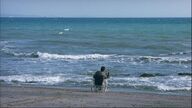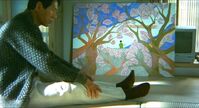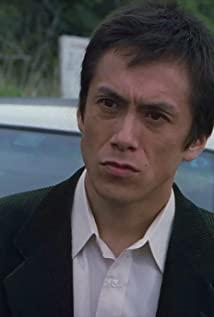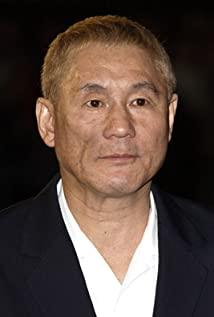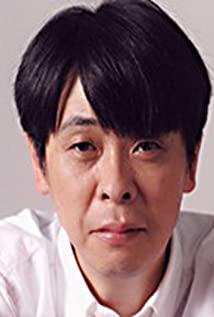And this article only uses "Spark" (the pinnacle of Takeshi Kitano, one of Japan's famous directors for "violent aesthetics") to illustrate the author's shallow understanding of "violent aesthetics".
Hana-bi
aka: Fireworks / sparks / fireworks
Director: Takeshi Kitano (Takeshi Kitano)
Release Year: 1997
Producer countries / regions: Japan
Music Director: Joe Hisaishi
Producer: Mori Masayuki, Tsuge Jing Division, Yoshida multi Yoshio
Vice Director: Hiroshi Shimizu
main cast: Takeshi Kitano (best Western King),
Running time: 105 minutes
in 1997 won the 54th Venice international film Festival Golden Lion Award
When it comes to Kitano Takeshi’s first reaction is the violence in his films. In Kitano Takeshi’s films, there are many bloody scenes of beating, kicking, and killing, and these violence often happen suddenly and carelessly. The precision and directness are slightly flattering. Light and solid fall into our eyes, often before we figure out what is going on, it is over. Those violent scenes were very bloody but so clean and tidy, without any cumbersome feeling.
Next, let's start with "Spark" itself: the whole film is shot in a narrative style that is interspersed with seriousness and humor, typical of Kitano's "violent aesthetics" works. As soon as the film appeared, Kitano's dumb face was violent against the blue uniforms of two workers with partial close-ups and distant shots. One of the blue uniforms with blood on the nose was the end of Kitano's car washing, and the violence was specific. The process is omitted. When the blue uniform slid down on the front cover of the car, Kitano kicked his ass and knocked the bucket next to him. There was no dialogue or background music in the whole process. It was quiet and black. And then Kitano's queen actor appeared one after another-Kashimoto Kayoko (Miyuki) Osugi Ren (played as Horibe Yasuke), Terajima Shin (Nakamura Yasushi), Hakuryu (played as Tojo Masaji). Bailong was still respectful to Linglong, and reckless and rude to the next. His violence appears simple and sincere. Its habitual action is to slap subordinates on the head and swear words. In contrast to Kitano's silent and rapid violence, coupled with Koshimoto's innocent smile, Osugi Renomi had a slightly sad expression. It is the entire cast that appears subtle and rich in a quiet and serious background.
Kitano Takeshi’s small sunglasses in the film complemented his solemn silence and portrayed a policeman with schizophrenia vividly. In this way, his swift and straightforward violent way seemed very natural. And there is no pretentious feeling about the changes in the roles of the two before and after, whether it is buying police lights, horns, or modifying stolen taxis-robbing banks and killing loan sharks. Become a thief, a fugitive. It was all because of that colleague was brutally killed by the suspect in front of him, making him shoot the dead suspect continuously until there were no bullets. After all these violent acts, the director has done enough moral for the tragic death of this colleague, and secondly, his best partner Yasushi Nakamura was paralyzed by the suspect just after calling his family. Case. The audience resolutely stood on Kitano's side, and unconsciously gave a completely positive affirmation of Kitano's violent behavior, so that the process of violence in Kitano's process was full of justice. When the "bad guys" were killed and the bank robbery was successfully completed, the pleasure in the audience's heart was sublimated into a kind of invigorating moral beauty along with Kitano's clean violence. (In fact, such a method used this set of moral montages to change the aesthetic judgment of the audience, whether it was romantic martial arts themes or realistic gang violence themes in Hong Kong before, but Kitano Wu used it so handily.)
Of course, As a prestigious director, his own shooting style is naturally unique. In addition to his violent narration, he uses the plot to pave the way and beautify it, but also through the tone of the narration, the editing of the camera, and the personality of the actor. Acting, Joe Hisaishi’s music, beautiful pictures and concise and ingenious dialogues, etc. to strengthen the theme and set off the atmosphere of the film, and finally reach the audience with a violent beauty, so that the audience can experience it in just 100 minutes. A cruel and hopeful journey of vision and soul.
Specifically, the whole film is full of humorous scenes, especially in the second half of the film, from the dispute between the owner of the scrap car recycling station and the driver of the van, reprimanding the thief for stealing a taxi, to selling the car to Takeshi Kitano. Robbing the bank, with a kind of innocent, honest and domineering personality, matched with the full-faced horror and crab-like horoscope, it is really cute. The section where Kitano drove his modified police car to rob the bank is a black classic. He looked like a well-trained and professional robber against the Hong Kong and Hollywood bank robberies, using the appearance of a policeman (classic irony) Even the silk stockings with his face waived the upright robbery, and he didn't say a word, as if he was just going to get the money that belonged to the uniform itself. (Let the mud think of the classic clips in "A World Without Thieves"-hitting, hitting, robbing and pulling~~, be strict, strict, serious, point.) This way, in order to buy painting tools for friends and give small compensation to colleagues who died in their duties. The way the robbery was carried out was the first time that Mud saw it. I really didn't know what was going on at the time, but afterwards he laughed loudly. Of course, in addition to such black humor, there are many warm and touching humor scenes such as: Kitano set off fireworks when traveling with his wife after the successful "withdrawal", but after the fireworks were lit, there was no response for a long time. Kitano After looking at each other with his wife and smiling, they had to walk in and look, but when Kitano looked closer, his eyes flew out, scaring him to lie back on the grass; and guessing the license plate through the mirror in the car. ; At the last second of the automatic shutter license plate, a car passed in front of them; at noon in the monastery, in order to let the child hear the bell, ringing the big bell that was supposed to help the king to ring, etc. A series of humor is full Childlike and extremely warm. And these humours reconcile the bloody and violent pictures with the dark and cruel social reality, so that the audience's emotions can be slightly relaxed in the violence, which not only exposes the ugly side of reality and human nature, but also constantly gives people warmth and peace. comfort. This kind of humor is not the nonsensical humor of Stephen Chow, but the profound irony that is pointed out. Perhaps it has something to do with the director’s life history (being a taxi driver, a comedian in a striptease show, and Kane Ziqing in 1973). Formed a counterpart comic group "Two Beat", active in the television and radio world, and was popular with spicy and black humor, and became the soul of the Japanese cross-talk boom in the 1980s.) So Kitano’s sense of humor is so natural and deep. Just like his violent justice is thought-provoking.
Secondly, the editing of the shot is like the transition of Kitano Takeshi’s black humorous narration and serious sorrow. For this film, it is as if a tragic event has appeared without warning. It is very abrupt and cruel. When the wife and children have just finished playing happily. After the phone call, the suspect was shot half-failed, and at the same time, Kitano was sitting in the spacious office outside in the bright sunshine, gentle breeze stroking the dense leaves outside the window, peaceful and dreamy. The doctor was saying that his wife was running out of time, but the outside partner was ruthlessly shot. This kind of picture editing is used in many places in the film: beautiful natural scenery and brutal and bloody shots overlap each other; montage shots are grouped in a different order; violent close-ups and beautiful telephotos are quickly interspersed; quiet long shots and Continuous and alternate use of shaking close-up clips; plus the violin, bass, and keyboard in the background music. The entire cruelty and pleasure of violence appeal to the audience at the same time. Strengthen its authenticity, so that the audience is immersed in the pleasure of violence and the joy of justice in terms of sight, hearing, taste and even touch.
Another major feature of the film is the violent scenes of simplification and silent handling in the dialogue of the characters, especially the fact that Kitano himself was forced to not speak, whether it was at home in the ward and his wife’s relative speechlessness, using the mouth of a colleague. To tell the cause and effect and situation of oneself, it is still silence in front of colleagues, especially in front of "bad guys". Those who can use the screen to narrate will never use lines and music, and those who can use the sound to express accurately will not use the lens. Direct shooting is used to omit the direct finger of the screen. The most typical thing is that the lens is facing the sea at the end of the film. The two gunshots of the expressionless waves indirectly conveyed the tragic ending and the silent treatment of the bloody scene of the death of a colleague for the first time. It gives the audience a sense of isolation and defamiliarization, so that the sadness is not so strong, and even a hope to the audience, the attention that the kite-flying child runs innocently and takes away the various possibilities of the two gunshots. The gunshots and silent treatment outside the screen all no longer dilute the sadness, the violence, and the despair. The signifier and signifier of many other props are used to interpret the gap between the reality and the ideal of life. For example, the kite that can never fly in the hands of a child can only go up and down, and was finally torn off by Takeshi Kitano. , But also did not stop the desire and practice of flying, management is doomed to fail but never gave up, making its ending more confusing and completely left to the audience to choose. The concept of receiving aesthetics is perfectly applied to the work, allowing the audience to complete this violent life together, and to give the final definition of the work according to their own needs, which can be described as the wisdom of the Orientals ingeniously displayed. It is only natural to win the Golden Lion Award at the Venice Film Festival that year.
It is worth mentioning that the bright colors of the paintings by Takeshi Kitano himself in the film are not enthusiastic at all. On the contrary, they give people a huge sense of silence and sadness. Especially for those mermaid, birds and beasts with flowers as their heads, the feeling of shock mixed with the power of Greek tragedy makes people be frightened. After a moment of blank consciousness, they are suddenly filled with an infinite force of resistance, and the hero's sense of mission emerges spontaneously. Inspired by Hisaishi’s sensational music, a yearning and admiration for beauty overwhelmed everything occupying the entire consciousness of the audience, constantly sublimating into an eternal melody in the heart. The violence here seems to have confiscated the moral and social attributes, and has become a flashy city wall. Under the guidance of the Statue of Liberty, he rushed into the palace of "beauty". Comfortable.
This article is the original of mud
Please contact me for reprinting http://niba5.baodoo.com
View more about Fireworks reviews



